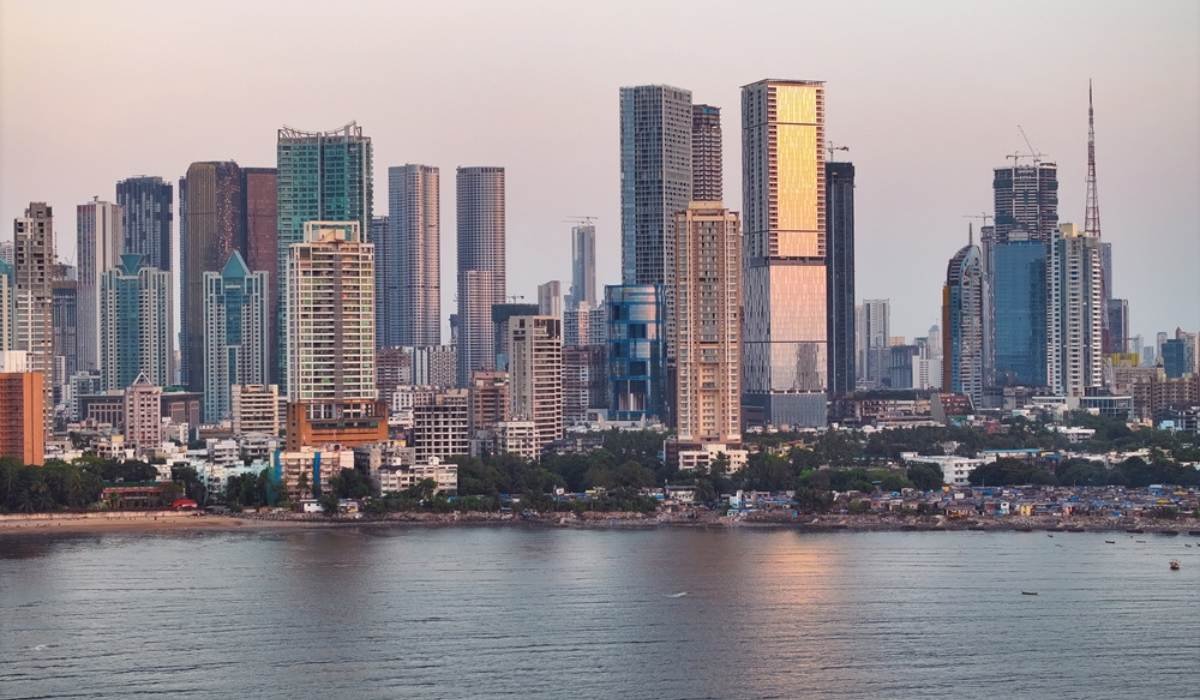India is the world’s most populous country and home to several cities, classified based on their infrastructure, liveability, and economic indicators. This article shares details about the Tier-1 cities in India, which include major metropolitan regions — Mumbai, Delhi, Kolkata, Chennai, Bangalore, Hyderabad, Pune, and Ahmedabad.
See also: Top five planned cities in India
Tier-1 cities in India: How are they classified?
The classification of cities in India into different tiers was primarily carried out based on population, education, infrastructure, and per capita income. Tier-1 cities fall into the category of cities with the highest rank owing to their robust infrastructure, large population and high standard of living compared to other cities. These are major economic hubs and drivers of the country’s economic growth. Moreover, these cities offer better job opportunities, a bustling social life, and superior healthcare and educational facilities. However, these cities also come with challenges such as high living costs, traffic congestion, pollution, etc. Each city has its unique characteristics, cultural heritage, and economic contributions.
List of Tier-1 cities in India
Let’s delve into the eight Tier-1 cities in India:
Mumbai
Mumbai, the financial capital of India, has several financial institutions, such as the Reserve Bank of India (RBI), the Bombay Stock Exchange and multinational corporations. Mumbai is also known as the entertainment capital of India and is home to numerous theatres, music venues and cultural festivals. It is one of the most densely populated cities in India. The continuous influx of people seeking employment opportunities makes the city a talent hub with a cosmopolitan culture.
Educational Institutions
Mumbai houses some of the top educational institutions and universities in India. These institutions draw students from all over the world, contributing to the city’s vibrant intellectual atmosphere.
Real estate in Mumbai
With businesses, IT hubs and entertainment industries, Mumbai is at the forefront of real estate demand. The city skyline is continually evolving with luxury apartments, skyscrapers, and commercial spaces, making it a lucrative choice for real estate investment.
The property values are high due to limited land availability and high demand. The space scarcity combined with the growing population has led to sky-rocketing property prices. Thus, prospective buyers and investors look towards emerging suburbs and peripheral areas of the city, where the price per square foot is relatively lower. Apart from residential properties, Mumbai offers numerous opportunities for commercial real estate investment, owing to numerous multinational corporations and a thriving start-up ecosystem. There are investment options, such as office spaces, retail outlets and warehouse facilities.
Further, the Real Estate Regulatory Act (RERA) in Mumbai has brought a significant change in the property market and enhanced buyer confidence by ensuring transparency, timely completion of projects and protecting buyers’ interests.
Infrastructure
Mumbai is known for its world-class social infrastructure, from skyscrapers to expansive malls, educational institutions, hospitals, and entertainment centres, which is another key aspect of a Tier-1 city. The Mumbai Metro and monorail project with other infrastructure projects have positively impacted Mumbai’s real estate landscape.
With a robust and efficient transportation system, Mumbai has an extensive network of public transportation including local trains, buses, metros, cabs, and auto-rickshaws, providing smooth connectivity for its inhabitants, and establishing it as a Tier-1 city.
Delhi
Delhi is India’s national capital and the political centre hosting the Parliament, the Supreme Court, and embassies of several countries. The city is known for its rich culture and history, with landmarks, such as the India Gate, the Qutub Minar and the Red Fort. From popular landmarks to traditional arts and street food to high-end dining, these cultural aspects enhance Delhi’s appeal as a Tier-1 city.
Delhi boasts remarkable infrastructure, high per capita income, and a thriving job market, drawing thousands of migrants every year. The city’s economy thrives on various sectors, such as information technology, telecommunications, hotels, banking, media and tourism, offering employment to millions of people. Delhi’s population density is one of the highest among Tier-1 cities. It is one of the most cosmopolitan cities in India.
Infrastructure in Delhi
Delhi offers its inhabitants a high quality of life, with its well-maintained roads, efficient public transportation, numerous educational institutions, and state-of-the-art healthcare facilities. Delhi has well-planned road networks and provides connectivity for its residents through the robust Delhi Metro network and an international airport. A network of flyovers, expressways and wide roads facilitate smooth vehicular movement.
Real estate in Delhi
Delhi attracts a considerable number of investors owing to its strategic political and commercial significance. There is a range of property options for investors, from luxury villas to affordable housing. The prime real estate locations in Delhi include South Delhi, Central Delhi, and New Delhi. Moreover, the city is a hub for various multinational corporations, start-ups, and businesses, which has increased the demand for commercial spaces. The central business districts include Connaught Place and Nehru Place, offering some of the most expensive and sought-after properties.
Kolkata
Kolkata, the capital of West Bengal, is referred to as the cultural hub of India with a rich literary and artistic heritage. The city was the capital of British India till 1911 and is popular for its literature, arts, and cinema. It has a large population with a cosmopolitan culture, high-end infrastructure, and robust public services. Kolkata is a major hub for the banking and finance sectors and home to major Indian corporations and multinational companies. The city also has thriving retail, information technology and real estate sectors, contributing to its status as a Tier-1 city.
Infrastructure
Modern infrastructure is a key aspect of Kolkata as a Tier-1 city. It has a well-connected public transportation system, including an efficient metro network. The city is home to international-standard schools, hospitals and shopping malls, thus offering a high quality of life.
Real estate in Kolkata
Kolkata’s real estate sector offers a mix of commercial projects and residential properties for investment. The city has witnessed a rise in demand for both affordable and luxury housing. Strong economic growth and enhanced infrastructure, such as the upcoming Kolkata Metro projects are contributing towards the growth of the real estate market.
The development of IT parks and special economic zones (SEZs) have attracted global companies, thus increasing demand for commercial space. Moreover, the introduction of RERA (Real Estate Regulation and Development Act) has increased transparency and accountability, increasing confidence among investors and homebuyers. Locations in Kolkata such as Salt Lake, New Town, Rajarhat, etc., are the most sought-after for real estate investment.
Chennai
Chennai is the capital of Tamil Nadu and known to be the biggest cultural, economic, and educational centre in South India. The city is also an IT hub, with Tidel Park being one of the largest IT parks in Asia. The city has an extensive industrial base in the automobile, computer, technology, hardware manufacturing, and healthcare sectors in both public and private sectors.
Infrastructure in Chennai
Chennai has a robust and well-planned infrastructure. It has an international airport, extensive road networks, and a significant port that plays a crucial role in trade. The fast-developing metro projects aim to provide improved connectivity for residents. Chennai is home to many prestigious institutions, such as IIT-Madras and Madras Medical College.
Real estate in Chennai
Chennai has a thriving real estate sector, which has evolved from traditional houses to high-rise apartments and luxury villas. With the growth of IT sector, the demand for residential and commercial spaces has increased. There are range of investment opportunities available for investors and end-users, from affordable housing to luxury apartments, and from commercial spaces to plots. The emergence of IT parks and SEZs has fuelled the demand for real estate in the city. Further, the city is seeing a rise in the demand for green buildings, smart homes, and co-living spaces. The regulations of the Tamil Nadu Real Estate Regulatory Authority (TNRERA) Act ensure transparency and protect the interests of homebuyers.
Chennai, as a Tier-1 city in India, boasts a thriving real estate sector, owing to its robust infrastructure and economic development. The city offers diverse property options ranging from affordable flats to luxury villas. It’s a hub for IT/ITES companies, attracting working professionals, leading to a consistent demand for residential properties. Chennai also has a growing commercial real estate market, with increasing investments in office space and retail outlets. The city’s real estate is characterised by stability, steady growth, and high returns on investment, making it an ideal choice for property investors.
Bangalore
Bangalore is known as the Silicon Valley of India and is a major hub for multinational technology companies and research institutions, a key attraction for job seekers. The city is also known for its green space and nightlife. It is one of the fastest-growing cities in the world by 2030, with the presence of national and international businesses and innovative start-ups. With more than 7,000 startups, the city encourages entrepreneurship and innovation.
Infrastructure
The city has a well-connected transportation network and the third busiest airport in India, an expanding metro rail network and extensive road network. It also has leading educational and research institutions, such as the Indian Institute of Science (IISc), National Institute of Mental Health and Neurosciences (NIMHANS) and several engineering, medical and management colleges.
Real estate in Bangalore
Bangalore’s fast growth has generated increased demand for both residential and commercial real estate properties. There is a diversity in housing needs and preferences, ranging from traditional homes to modern apartments and townhouses. The steady influx of migrants, mainly professionals, has driven the demand for real estate in Bangalore. The availability of a host of lifestyle amenities makes the city an ideal choice for individuals and families.
Hyderabad
Hyderabad, capital of Telangana, is a major IT and ITES hub and has witnessed a growth of tech parks. The city has historical landmarks, such as Charminar and Golconda Fort, enhancing its architectural splendour.
Real estate in Hyderabad
Hyderabad is one of the Tier-1 cities in India, with a flourishing real estate market. The key drivers for the growth of property investments in the city include a robust IT sector, infrastructure development, rising employment opportunities and a cosmopolitan way of life. There is a range of properties available for investment, from affordable apartments to luxury villas, catering to the needs of diverse segments. The peripheral areas are witnessing a rise in demand owing to their affordability and easy access to IT hubs.
Moreover, Hyderabad offers lucrative commercial real estate investment opportunities, with numerous MNCs setting up their offices here.
Pune
Pune is referred to as the Oxford of the East. The city is the second-largest IT hub and known for having more than a hundred educational institutions. There are numerous multinational companies and industries. Besides, it has a rich cultural heritage with various historical landmarks and temples. Pune stands out as a Tier-1 city owing to its high standard of living. It has the excellent social infrastructure, including healthcare, education, entertainment, and recreational facilities, making it an attractive destination for families and young professionals.
Infrastructure
Pune has a well-developed transport system, modern buildings, and advanced telecommunications, which bolster business operations and living.
Real estate in Pune
Pune has property options ranging from affordable to high-end luxury, which cater to different buyer segments. There are numerous residential projects that provide affordable housing to luxury villas and apartments. Some popular localities for buying homes include Baner, Wakad and Hinjewadi. Moreover, the city has a thriving commercial real estate sector due to the emergence of the IT hub. The prime localities for commercial properties include Kharadi, Hinjewadi and Viman Nagar. In addition, Pune has been witnessing a growing trend in co-living and co-working spaces.
Ahmedabad
Ahmedabad is the largest city in Gujarat and serves as an economic and industrial hub. It is mainly known for its thriving textile and manufacturing industries and educational institutions, such as Indian Institute of Management-Ahmedabad (IIM- Ahmedabad). Further, the start-up culture has augmented Ahmedabad’s status as a Tier-1 city.
Infrastructure
Ahmedabad has a highly developed public transport system, including buses, taxis, and metro system. Moreover, it has a robust framework of roads, bridges, and flyovers, enhancing its connectivity.
Real estate in Ahmedabad
Ahmedabad has seen a rise in real estate demand, including housing and commercial properties. The city has witnessed the recent trends of growing demand for affordable housing and green buildings. Key localities in Ahmedabad for property investment include Satellite, Bopal, SG Highway and Prahlad Nagar. Further, there is a noticeable increase in the demand for commercial properties.
Government policies, such as RERA and Goods and Services Tax (GST) have made transactions transparent and enhanced investor confidence in the property market. Furthermore, the implementation of smart city projects has also given a boost to the real estate prospects in this city.
FAQs
Which cities are considered as Tier-1 cities in India?
The prominent Tier-1 cities in India are Mumbai, Delhi, Bangalore, Chennai, Kolkata, Hyderabad, Ahmedabad, and Pune.
What are the challenges faced by Tier-1 cities in India?
Rapid urbanisation has led to problems, such as overpopulation, pollution, traffic congestion, and high cost of living in Tier-1 cities.
What makes Tier-1 cities attractive for investors and job seekers?
Tier-1 cities have several industries, from IT and finance to manufacturing and entertainment, offering numerous opportunities to investors and job seekers. Additionally, they have robust infrastructure, high standard of living and access to quality social infrastructure facilities.
How do Tier-1 cities differ from Tier-2 and Tier-3 cities in India?
Tier-1 cities are major metropolises, having large population, thriving economies and extensive infrastructure compared to other cities that are smaller urban areas with moderately developed facilities and lesser economic activity. They differ in the scale of opportunities, standard of living, and growth prospects.
What are Tier-1 cities in India, and what criteria define them?
Tier-1 cities in India are the major urban regions that have high level of economic development, infrastructure, and population density. They are classified based on a population exceeding one million, economic activities, infrastructure facilities, and efficient public transportation system.
| Got any questions or point of view on our article? We would love to hear from you. Write to our Editor-in-Chief Jhumur Ghosh at jhumur.ghosh1@housing.com |
Harini is a content management professional with over 12 years of experience. She has contributed articles for various domains, including real estate, finance, health and travel insurance and e-governance. She has in-depth experience in writing well-researched articles on property trends, infrastructure, taxation, real estate projects and related topics. A Bachelor of Science with Honours in Physics, Harini prefers reading motivational books and keeping abreast of the latest developments in the real estate sector.











